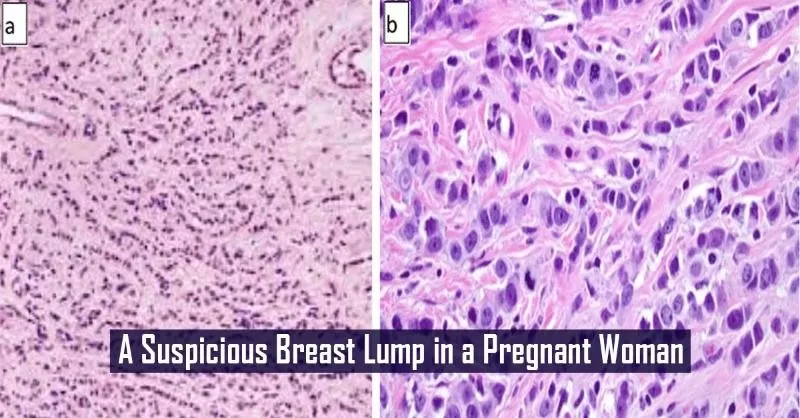Breast lumps during pregnancy can be a concerning yet common occurrence for expectant mothers experiencing significant bodily changes. As the body prepares for the coming baby, various physiological adjustments, including hormonal fluctuations, often lead to breast health changes resulting in lumps. Recognizing the symptoms of breast lumps is vital, as many are benign and linked to conditions like clogged milk ducts, which result from milk production in preparation for breastfeeding. Understanding this phenomenon is crucial for pregnant women, enabling them to distinguish between normal breast changes and potential issues that may require medical attention. In this article, we will explore the common causes of breast lumps during pregnancy, the symptoms to monitor, and guidance on when to consult healthcare professionals.
The presence of breast masses during gestation, often known as pregnancy breast changes, can be alarming for many women, prompting questions about their health. Observable alterations in breast tissue can manifest in various forms, including cysts and benign growths, resulting from normal alterations in hormone levels. Engaging with symptoms associated with these lumps is essential for maintaining optimal breast health during pregnancy. Furthermore, awareness of conditions such as blocked milk ducts can inform proactive measures to address any discomfort or concern surrounding these lumps. This article sheds light on the signs worth monitoring during this pivotal time in a woman’s life.
Understanding Breast Health During Pregnancy
Breast health during pregnancy is a crucial aspect of prenatal care for expectant mothers. As hormonal changes surge throughout this period, women may experience various modifications to their breasts, including size increase, tenderness, and changes in shape—factors that are often normal but can also lead to confusion or anxiety. It is essential for pregnant women to educate themselves about these changes to better understand what constitutes a normal development versus a potential issue.
Regular examinations can help pregnant women become more attuned to their breasts, enabling them to identify any abnormalities early on. Being aware of the common symptoms of breast lumps, such as swelling or tenderness, is imperative. This knowledge allows expectant mothers to manage their breast health proactively and seek medical assistance when necessary.
Common Symptoms of Breast Lumps
The symptoms of breast lumps can vary widely, making it essential for pregnant women to recognize the signs early. Common indications include pain or tenderness near the area of the lump, which may be more pronounced than typical discomfort experienced during pregnancy. Alongside this, noticeable changes in the size or appearance of the lump are key warning signs that should be monitored closely.
In particular, pregnant women should note any lumps that persist beyond the postpartum period or become more pronounced over time, as these could indicate an underlying issue that may require professional investigation. Regular self-assessments significantly improve the chances of detecting such changes early, allowing for timely intervention and ensuring safer outcomes.
Clogged Milk Ducts: A Common Concern
Clogged milk ducts are a frequent occurrence during pregnancy, often leading to the development of breast lumps known as galactoceles. These lumps can form when milk flow is obstructed, resulting in discomfort and noticeable swelling. Understanding this condition is vital for expectant mothers, as it can cause both physical symptoms and emotional stress.
Signs of clogged milk ducts typically include localized pain, warmth in the area, and the appearance of a firm lump within the breast. Managing this condition involves techniques such as frequent breastfeeding or pumping, applying a warm compress, and practicing proper breastfeeding positioning. Awareness of clogged milk ducts can help pregnant women address lactation issues proactively and maintain their breast health.
Benign Breast Conditions During Pregnancy
Many benign breast conditions can manifest during pregnancy, leading women to discover lumps that are not typically a cause for concern. Conditions such as cysts or fibroadenomas—non-cancerous lumps—often arise due to hormonal fluctuations. While it’s natural to feel alarmed upon discovering a lump, educating oneself about these benign breast conditions aids in alleviating worry.
Routinely observing any changes in breast lumps is critical, even if they are identified as benign. Women should maintain open dialogue with healthcare providers about any concerns, especially if symptoms change or worsen. Understanding that benign conditions often do not present immediate health risks allows expectant mothers to focus on their pregnancy while ensuring they are practicing good breast health.
When to Seek Medical Advice for Breast Lumps
Although many breast lumps during pregnancy are benign, knowing when to seek medical advice is critical for maintaining breast health. Pregnant women should consult their healthcare providers if they notice hard or fixed lumps, especially if accompanied by other unwelcome symptoms such as unusual discharge or skin changes. Early evaluation can provide peace of mind and ensure any underlying issues are addressed.
It’s also important to remember that symptoms associated with serious conditions, such as persistent lumps or significant breast pain, warrant immediate attention. Healthcare professionals can conduct necessary screenings and assessments to ensure the health of both the mother and her developing baby. Staying proactive and vigilant against any alarming symptoms helps protect both maternal and fetal well-being during this critical time.
Frequently Asked Questions
What are the common symptoms of breast lumps during pregnancy?
Common symptoms of breast lumps during pregnancy include noticeable lumps, tenderness, and changes in size or shape of the breasts. Many women may experience clogged milk ducts, which can lead to painful lumps as the body prepares for breastfeeding. Keeping track of these symptoms can aid in managing breast health during pregnancy.
How do pregnancy breast changes affect breast health during pregnancy?
Pregnancy breast changes can lead to various benign breast conditions, including lumps caused by hormonal fluctuations. As the body prepares for lactation, expectant mothers may notice swelling and lump formation due to clogged milk ducts. Regular self-exams and consultations with healthcare providers are vital for maintaining breast health during pregnancy.
What should I watch for in breast lumps during pregnancy to ensure they are benign?
When monitoring breast lumps during pregnancy, watch for signs such as pain or tenderness, as well as changes in size or shape. If a lump persists or becomes larger postpartum, it is important to consult a healthcare provider. Understanding the benign nature of many pregnancy-related lumps can alleviate concerns while remaining vigilant.
Are clogged milk ducts a common cause of breast lumps during pregnancy?
Yes, clogged milk ducts are a common cause of breast lumps during pregnancy. As breasts become fuller and prepare for milk production, blockages can occur, leading to painful lumps. Monitoring these changes and performing regular self-exams can help expectant mothers manage and understand their breast health during this time.
When should I seek medical advice about breast lumps during pregnancy?
You should seek medical advice about breast lumps during pregnancy if you notice any hard or fixed lumps, significant changes in breast appearance, or unusual nipple discharge. While most breast lumps are benign, discussing any concerning symptoms with a healthcare provider ensures proper evaluation and care for your breast health during pregnancy.
| Key Aspect | Details |
|---|---|
| What are Breast Lumps During Pregnancy? | Benign swellings often caused by hormonal changes; can include clogged milk ducts, cysts, and fibroadenomas. |
| Common Causes | Hormonal fluctuations typically leading to clogged milk ducts or benign conditions. |
| Signs to Monitor | Pain, tenderness, changes in size or shape, persistence of lumps. |
| Symptoms to Seek Help For | Hard lumps, changes in appearance, unusual discharge. |
| Recommended Actions | Regular check-ups, self-exams, open communication with doctors, understanding risk factors. |
Summary
Breast lumps during pregnancy can be concerning for expectant mothers as they navigate the various physical changes that come with this transformative period. Most lumps are benign and stem from typical hormonal fluctuations, but it is crucial for women to remain vigilant. By performing regular self-exams and monitoring for changes such as size or pain, mothers-to-be can better manage their breast health. Consulting healthcare professionals when noticing unusual signs ensures that any potential complications are caught early, allowing for appropriate care and peace of mind.
The content provided on this blog (e.g., symptom descriptions, health tips, or general advice) is for informational purposes only and is not a substitute for professional medical advice, diagnosis, or treatment. Always seek the guidance of your physician or other qualified healthcare provider with any questions you may have regarding a medical condition. Never disregard professional medical advice or delay seeking it because of something you have read on this website. If you believe you may have a medical emergency, call your doctor or emergency services immediately. Reliance on any information provided by this blog is solely at your own risk.






